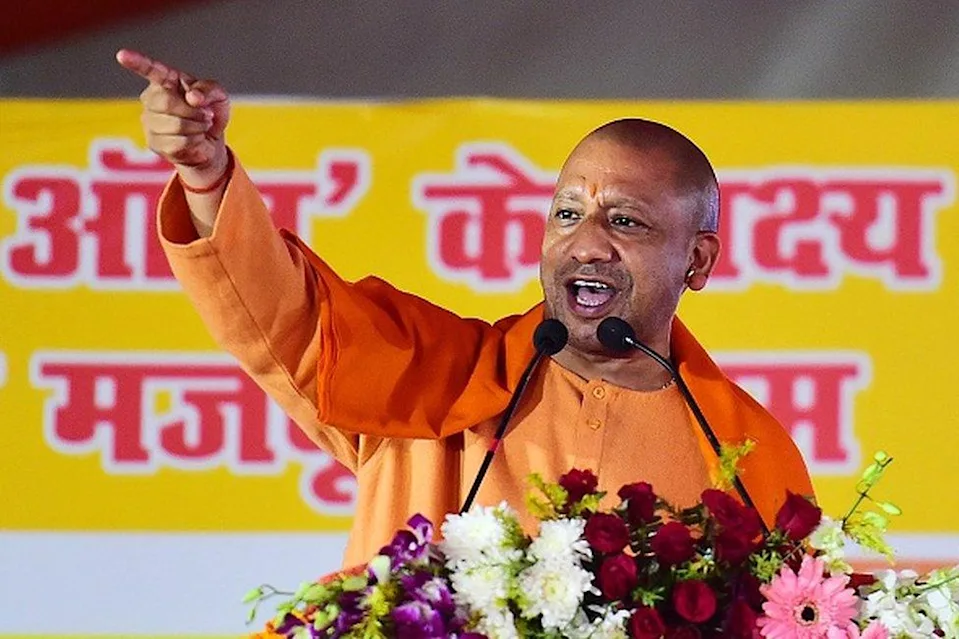Is a rebellion brewing in Narendra Modi’s governing Bharatiya Janata Party (BJP) ahead of elections in Uttar Pradesh, India’s most politically crucial state?
Ten legislators, including three ministers, have so far jumped ship from the BJP in Uttar Pradesh. Most of them have joined the main rival, the regional Samajwadi Party. One of them is Swami Prasad Maurya, a veteran five-time legislator, who believes his move will cause an “earthquake” in the BJP.
But political defections – especially before regional ballots – are not uncommon in India. Politics has turned increasingly transactional, with leaders routinely crossing over if they are denied a ticket by their party.
And for many years now, states like Uttar Pradesh have had assemblies packed with newcomers. This has happened as the tradition of time-tested candidates has withered away.
The diminishing stature of legislators is in part because of a political culture that favours concentration of power in the hands of state chief ministers, says Giles Verniers, a professor of political science and co-director of Trivedi Centre for Political Data (TCPD) at Ashoka University.
Also, parties like BJP work hard on getting feedback from voters to find out whether their candidates have become unpopular. Non-performing candidates are usually denied tickets.
“The BJP does not contest elections only to win but to decimate the opposition. It’s not happy to come to power with a slender majority,” says Sanjay Kumar, director of CSDS/Lokniti, a Delhi-based think tank. In the 2017 state polls, the BJP swept Uttar Pradesh, winning 312 of the 403 seats and picking up nearly 40% of the popular vote.
Of the 312 winning legislators, only 19 had won a seat twice or more previously, according to data by TCPD. Of these 19, nine had defected from other parties.
The latest defections have caused a kerfuffle because Uttar Pradesh is a bellwether state. Next door to the national capital, Delhi, it has the most number of people (200 million) in India. It also sends the maximum number of MPs – Mr Modi himself is one of the state’s 80 MPs – and legislators to the parliament and state assembly.
To be sure, defections from a dominant ruling party like the BJP to the main rival can create an impression – largely among swing voters – that the former is facing headwinds. These electors might begin to believe that the main opposition – in this case, the Samajwadi Party – is locked in a close contest with the BJP. “But perceptions and reality could be completely different,” Dr Kumar says.
What election losers tell us about Indian democracy
Why fear has gripped Muslims in this Indian state
In India’s messy democracy, realities are fiendishly complex. “One reason why people are making so much of these defections is because of the larger political situation in Uttar Pradesh,” says Sudha Pai, a professor of political science at Jawaharlal Nehru University.
The BJP here is governed by Yogi Adityanath, a highly polarising figure within and outside his party. The 49-year-old shaven-headed, saffron-robed monk-turned-politician’s unabashedly hardline rhetoric against Muslims is aimed at a large swathe of Hindu votes.
Mr Adityanath has also fashioned himself as a development icon. Splurging on media adverts, he claims to have jump-started growth and created jobs aplenty in one of India’s most backward states. Yet, when independently fact-checked, many of these claims don’t hold up.
A farmers revolt has been brewing for long in the politically conscious western part of the state, which is traditionally seen as a harbinger of political change. (In December, India’s farmers called off a year-long protest after the government repealed controversial farm laws.)
The pandemic, which battered India’s already slowing economy, left millions of the state’s migrant workers in cities jobless and forced them to return home to meagre farms. Inflation has crept up. Mr Adityanath, according to his critics, is seen as an unapproachable leader who runs a government through his bureaucrats.
In a state where caste and identity politics matter as much as development, the BJP’s enviable success has been largely attributed to building a wide-ranging and inclusive Hindu caste coalition. This includes an array of the “other backward classes” or OBCs, a group of myriad middle-ranking castes who are disadvantaged compared to upper castes.
‘Muslims did no favour to India by staying here’
Some 20% of the OBCs are Yadavs, who are loyal to the Samajwadi Party. In the last state polls, in 2017, an astonishing 61% of non-Yadav OBCs – one in every four voters in the state – voted for the BJP.
Many believe this week’s defections hint at this coalition fraying at the edges – a bulk of this week’s party-hoppers are OBCs.
But it’s premature to assume that. By building such a coalition the BJP has been able to harness the “growing aspirational lower middle class,” Prof Pai says. The party, once dominantly upper-caste, has attracted backward caste Hindus to its fold and delivered them welfare benefits. “The BJP has successfully intertwined development with cultural inclusion”, she said. Some economists have called this the “new welfarism of India’s right”.
Uttar Pradesh begins polling in under a month, on 10 February. Some 150 million people are eligible to vote in the staggered seven-phase election. A week is a long time in politics, and a handful of defections is unlikely to radically change the political dynamic of India’s most populous state. “For now, its just an indication of what could be a close contest,” Dr Kumar says.




